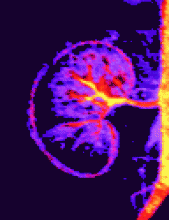- © 2005 CMA Media Inc. or its licensors
We thank Harold Siden and Gerry Burns for sharing their insights regarding the challenges of teaching EBM to clinicians and for raising important issues pertaining to the use of tips (or scripts) and other fascinating innovations in such teaching. Siden points more broadly to obstacles to the full integration of EBM into clinical practice. We have addressed Gerry Burns's comments regarding number needed to treat, cost-effectiveness and long-term outcomes in a previous letter.1
Burns suggests a relationship, and some potential differences, between our EBM scripts,2 his own scripts and the notion of “threshold concepts” being developed within the ETL project (Enhancing Teaching-Learning Environments in Undergraduate Courses) at the University of Edinburgh (www.ed.ac.uk/etl/project.html). We suspect that the improvisational aspect of our scripts may constitute one important difference. Our scripts, like those studied by Irby,3,4 are subject to variation, truncation and expansion, depending on the circumstances and on learners' prior knowledge. Irby described how exemplary clinical teachers balance illness and curriculum scripts in the course of customizing their teaching rounds to the needs of both patients and learners.3 Rather than threshold concepts, he focused on characteristic learner misconceptions as guides to instructional decisions.
We find interactive teaching to be inherently improvisational. In the teachers' versions of our tips,5 narrative descriptions highlight possible variations based on learners' responses and characteristic errors. The reports of field tests describe substantive modifications of the approaches that have arisen when teachers not involved in developing the tips used them in learner settings different from those in which they originated.
Both Siden and Burns touch on the need to adapt the tips to specific contexts by using examples and corresponding numbers relevant to the topic or question at hand. Readers of both the learners'6 and the teachers'5 versions of a single tips installment, such as installment 2 on confidence intervals, may notice that a given example is presented more generically in the latter than in the former. We expect that teachers who adopt these approaches will frequently supply their own clinical context, numbers drawn from an article being appraised or other specialty-specific content.
Siden comments on variations in availability of quality evidence among different medical specialties and clinical areas. Resources such as the ACP Journal Club place internal medicine in advance of many other specialties in important clinical areas. Efforts aimed at a broader range of specialties exist, such as the McMaster Online Rating of Evidence (“MORE”; see http://hiru.mcmaster.ca/more). A paucity of clinical research ultimately limits evidence-based clinical practice. Undoubtedly, the frontiers of medical knowledge based upon well-performed clinical research will continue to expand over time, rendering all the more salient the need for effective teaching tools in equipping clinicians to digest and use such information.











